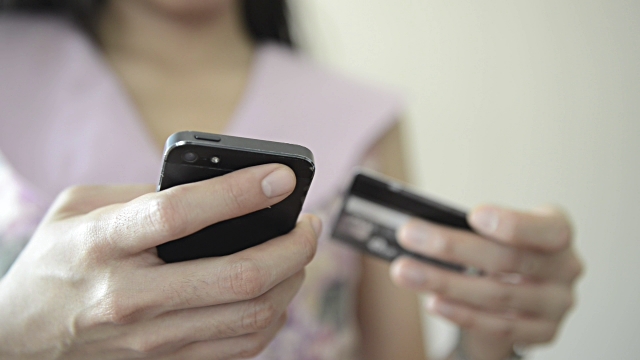How over-targeting can under-deliver
Every advertiser should add mobile to their marketing mix – period.
Mobile increases the overall performance of campaigns across all channels. In a recent study, we found that consumers who see ads in multiple channels convert 24 percent more often than those who see them in one channel.
by: Maureen Little, Senior Vice President of Business Development at Turn
The cross-channel impact of mobile speaks to how critical it is to approach mobile as an integrated part of a broader marketing campaign, not just as an isolated channel. But many marketers dive into mobile with too much focus on mobile-specific tactics, such as the ability to target users in very specific locations through hyper-local targeting. Often this hyper-local approach can do campaigns a disservice, deteriorating the intended results.
Goals – not technology – should drive your strategy
When planning mobile campaigns, many marketers get excited about the possibilities for targeting based on the inherently “on the go” nature of the devices. Yes, it is possible to target consumers right when they are near your store or are in a vicinity that indicates a particular state of mind. But just because you can target using proximity to create relevance doesn’t mean that you should. What are the goals of your campaign? Is there a location-based call to action in the ad you are delivering?
Mobile is tantalizing for marketers precisely because individuals are always within reach of these devices. But as with any targeting, there is always a tradeoff between specificity and reach. If your mobile campaign is essentially about general acquisition, you’re probably better off going broad rather than zeroing in with a geofence. A smarter approach might be to leverage the traditional location targeting that may be in place in other channels – by country, state, city, etc. – instead of taking it down to the granular level of geofencing. Similarly, if the creative assets you are delivering are intended for a wide audience and are not tailored to a specific location, there’s not much value in geofencing. In that case, you are much better off focusing on who your audience is rather than where they are.
Define your range
When you do need to reach your audience in a precise location, you need to define what exactly you mean by precise. Whether you are a national reseller trying to drive people to a local distributor or a brand running a regional campaign or tapping into a local fan base, carefully defining the size of your geotargeting radius is critical. Once again, this is the tradeoff between reach and specificity. How close to your location is too narrow to capture enough audience? How far is too far away for your audience to take the intended action?
Let location inform content
Once you’ve defined the range of a campaign, incorporating precise location into the creative of a campaign can be a powerful way to make ads more actionable and relevant. Mobile users are task oriented and typically want to complete mobile activities quickly, so tailoring creative based on location can deliver helpful content. For example, include the option to tap a map to find the nearest store, or click to highlight the nearest location and store hours from a web list.
Think location AND…
Often the best use of geotargeting comes in combination with something else, from site visit data for retargeting to dayparting. Combining location with context and daypart allows you to deliver highly relevant messages to the right person at the right time and in the right place. For example, a marketer can create a segment for in-market car buyers that consist of consumers within the proximity of auto dealers in Los Angeles, between the hours of 10am to 5pm, and that have recently accessed auto-oriented sites or apps. By layering the different data sources on top of a geotargeted campaign, you can interact specifically with consumers that have already signaled their intent in multiple ways. Mobile can be an excellent tool for broad acquisition, and combining these layers of additional data allows marketers to then drive targets deeper into the sales funnel.
Mobile doesn’t always mean “on the go”
As we all know from our own use of mobile devices, targeting a consumer on mobile does not necessarily mean targeting them when they are moving around town. Tablet use, for example, spikes during the hours when people are typically at home. By combining dayparting with geotargeting, retailers can tailor their mobile campaigns to hit the right tone with their audience. For example, if a retailer is having a big sale at a local location soon, they can target users that are browsing on their phone or tablet while relaxing on the couch in the evening. They might leverage location by adding a call to action to find the hours of a local store, or segmenting their ads based on local seasons and weather – targeting winter coats to the northeast and milder attire in the south, for example – or promoting tropical destinations to snow-bound customers. It’s not just that they are nearby that makes them a good target, it’s also the current mindset.
Put yourself in your customer’s shoes
One of the quickest ways to evaluate if a geotargeting mobile campaign is the right approach is a simple “gut check.” If you were that consumer, what would it take for you to see and act on an ad? If you are out running errands, what are the chances you are even going to be doing something on your phone that would allow you to see that ad? Are you at home relaxing or trying to get somewhere in a hurry?
Mobile devices have provided tremendous opportunities to engage with consumers in new and innovative ways. Taking advantage of mobile-specific capabilities such as hyper-local targeting as an integrated part of a broader marketing campaign, marketers can run successful mobile campaigns and drive results in all channels.

